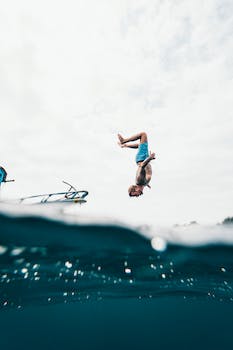Canoeing is a sport that has been enjoyed by people for thousands of years. What started as a casual hobby and a practical means of transportation has now evolved into an Olympic sport that showcases the skills, stamina, and precision of athletes from around the world. Here, we delve into the fascinating journey of canoeing, from its humble beginnings to the grand stage of the Olympics.
The roots of canoeing can be traced back to ancient civilizations who used canoes for fishing, transportation, and warfare. Native American cultures, in particular, were known for their mastery of the canoe, using it to navigate rivers, lakes, and coastal waters in North America. Canoes were handcrafted using materials such as wood, animal hides, and birch bark, reflecting the ingenuity and resourcefulness of these early civilizations.
As time progressed, canoeing became a popular leisure activity among outdoor enthusiasts and nature lovers. The joy of gliding across the water, the sense of tranquility, and the connection with nature that canoeing provides made it an appealing pastime for many. Canoeing clubs and organizations were formed, and recreational paddling became a common hobby across the globe.
In the late 19th century, canoe competitions started to gain popularity. These early races were often held on lakes and rivers, testing the skills and speed of the participants. The first official canoe race, known as the Devizes to Westminster International Canoe Marathon, took place in England in 1948. This event sparked further interest in competitive canoeing and laid the groundwork for the sport’s eventual inclusion in the Olympic Games.
Canoeing made its Olympic debut at the Berlin Games in 1936, but it was initially limited to men’s canoe sprint events. The inclusion of women’s canoeing came much later, with the first women’s canoe sprint event being added to the Olympic program in 2020, a testament to the growing recognition and gender equality in sports.
Today, canoeing in the Olympics consists of two main disciplines: canoe sprint and canoe slalom. In canoe sprint, athletes compete in flatwater races, usually on 500m or 1,000m courses. The competitors paddle in a straight line, using high-intensity strokes to maximize speed and maintain control. Canoes are equipped with paddles with a single blade on each end. Canoe sprint events are measured against the clock, with the fastest time determining the winner.
On the other hand, canoe slalom is a thrilling event that takes place on a whitewater course filled with various obstacles, including gates, rocks, and eddies. Athletes must navigate through the course, passing through designated gates without touching or missing them. Canoe slalom requires exceptional agility, strength, and precision, as the competitors paddle against the powerful currents of the whitewater.
Canoeing has come a long way, evolving from a casual hobby and practical necessity to a globally recognized Olympic sport. The inclusion of canoeing in the Olympics has undoubtedly elevated its status and brought attention to the immense skill and dedication of the athletes who compete.
Beyond the Olympic Games, canoeing continues to thrive as a recreational activity, allowing people to explore waterways, enjoy the tranquility of nature, and engage in physical fitness. It offers a unique blend of adventure, athleticism, and serenity that is truly unmatched.
The evolution of canoeing is an inspiring journey, reflecting humanity’s innate desire for exploration, competition, and personal growth. From its humble origins to the grandeur of Olympic success, canoeing has captured the hearts of millions and exemplifies the enduring appeal of sports that connect us with our natural environment.
![]()








